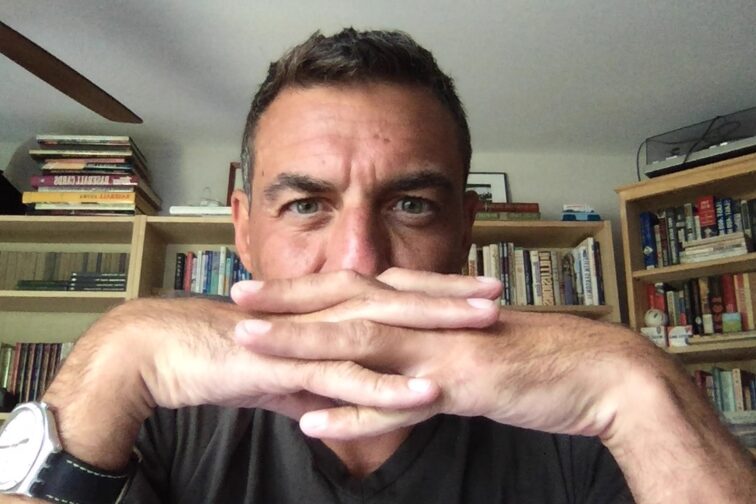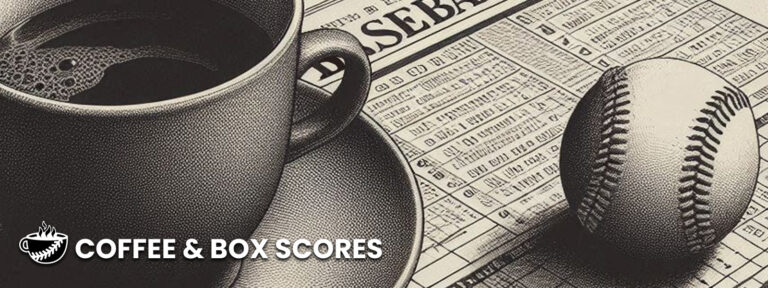Naturally and appropriately, Hideo Nomo carries a banner for introducing a “first” to the magic of season openers. The historic event occurred on April 3, 2000, when the right-hander became the first Japanese-born hurler to make an Opening Day start. Nomo allowed three runs over seven innings that Monday in Oakland to record the win: one of 123 victories he pocketed during a 12-year career with the Dodgers, Red Sox, Brewers, Tigers, Mets, Devil Rays and Royals.
Since that historic episode, there have been 15 additional convergences where a Japanese-born pitcher took the hill for his club’s start to a year, including a few that occurred in the same year, if not in the same contest: Masahiro Tanaka and Yu Darvish in 2017; Darvish and Kenta Maeda in 2021; Darvish and Shohei Ohtani in 2022. Incrementally, what started out a few years after Nomo-mania crested has progressed from something still worthy of note and celebration but also, simultaneously, a little less buzzy for its common-ness.
A quarter-century after Nomo’s solo show, a pair of hurlers will – according to all indications – perform an unprecedented duet, an inning-by-inning tradeoff that presents yet another “first” in a lineage that began when Masanori Murakami threw a scoreless inning with two strikeouts in his Major League debut for the Giants on September 1, 1964. Soon, in the first tilt of the 2025 regular season, Chicago southpaw Shota Imanaga is scheduled to duel with Los Angeles righty Yoshinobu Yamamoto to try and notch the initial win of the year. Two Japanese-born starting pitchers in one Opening Day matchup, sharing the same mound with the same goal, occupying a bit of shared space in a larger, continually shifting dynamic: an influence on the National Pastime sweeping in from a country with its own devotion to, and understanding of, baseball.
This year promises to be a special benchmark in the relationship.
The National Baseball Hall of Fame will open an exhibit this summer to celebrate the cultural and athletic exchange. In late July, Cooperstown will commemorate its annual placement at the center of the MLB universe when Ichiro Suzuki and his fellow inductees receive their plaques in recognition of their greatness and instrumental places in the game’s history.
Ohtani – in addition to hopefully getting back to mound duties to again toy with previous conceptions of possibility – will seek to join Barry Bonds as the only players ever to win more than three MVP awards. Ohtani and Yamamoto’s new Dodgers teammate – Roki Sasaki – will make his big league debut.
Imanaga – fresh off a debut campaign in which he won 15 games, pitched a scoreless frame in the All-Star Game and finished in the top-five in both Cy Young and Rookie of the Year voting – will team with Seiya Suzuki to try and help the Cubs get back into the postseason following a four-year drought.
After becoming the first Japanese-born pitcher to reach 2,000 strikeouts in 2024 (and 90th in MLB history), Darvish can continue his march toward maybe someday toppling Nomo for the most wins among their countrymen (he’s currently in second, 13 behind). Maybe that quest will start in San Diego’s first game; if it does, Darvish will tie the franchise record for most Opening Day starts by a pitcher and set a new high mark for the most by a Japanese-born hurler (he’s currently matched with Tanaka, at four).
However the season unwinds its narratives and numerical accomplishments, there will be sizable and significant contributions from players from Japan, stamps that not only tell the story of this year but link to what has occurred before, dozens and dozens of opportunities to recall the names and achievements that set the stage for the present.
Each time Darvish takes the mound, for example, it’ll be easy and natural to cast back to early April in 2013 when he retired the first 26 batters (with 14 strikeouts) only to surrender his bid for a perfect game to a Marwin González ground ball up the middle. Two years later, Seattle’s Hisashi Iwakuma experienced blemishes only in the walks column, unfurling a masterpiece that connected him to Nomo as the only Japanese-born pitchers to twirl no-hitters. Of Nomo’s two, his second was the more dominant: 11 strikeouts against the Orioles in Boston’s second game of the 2001 season. Nine starts later, he’d be about as clean as a pitcher could be, surrendering no walks, fanning 14 and coming within a fourth-inning double of another no-hitter.
Even those presentations, those callbacks to the magical when Nomo exploded onto the scene in 1995, really couldn’t (and still can’t) measure up to the alchemy that took place on September 17, 1996, when he achieved the improbable by holding the Blake Street Bombers and the rest of the Rockies lineup hitless at Coors Field. 11 years later, Kaz Matsui stirred his own brand of magic at the ballpark a mile above sea level, when he – with a leadoff double against Trevor Hoffman in the bottom of the 13th in Game 163 on October 1, 2007 – ignited Colorado’s comeback against a two-run deficit to continue the club’s rampage into the postseason.
Hideki Matsui’s six-RBI destruction of the Phillies in Game 6 of the 2009 World Series to propel the Yankees to the crown … Kazuhiro Sasaki’s joyful role in closing out so many of Seattle’s 116 wins in 2001 … Kenji Johjima homering in his big league debut in 2006 and Kaz Ishii stirring up recollections of Fernando Valenzuela by winning his first six career starts in 2002 … Tsuyoshi Shinjo starting for the Giants in Game 1 of the 2002 World Series and Tadahito Iguchi starting every contest at second base for the White Sox as they swept the Astros in the 2005 Fall Classic … So Taguchi welcoming Billy Wagner with a leadoff homer to break a ninth-inning tie in Game 2 of the 2006 NLCS … Kosuke Fukudome electrifying the Wrigley Field crowd with a homer and double as part of a 3-for-3 Major League debut on Opening Day in 2008 … the captivating first starts from Hideki Irabu in 1997 and Daisuke Matsuzaka a decade later … breathtaking bullpen work from Hideki Okajima, Akinori Otsuka and Takashi Saito and All-Star appearances by Shigetoshi Hasegawa and Koji Uehara … Akinori Iwamura calmy fielding a ground ball, racing to second and officially securing the Rays’ first pennant in 2008.
When Nomo – with his twisting, halting, springing windup – made his Major League debut on May 2, 1995, and then exited his start after five innings of 1-hit, no-run, 7-strikeout ball, a new key of possibility was selected from the ring, one initially crafted from preconceptions and decades-long refined rules but reshaped to unlock challenges to such givens. If the apex of such an initial transformation arrived via that no-hitter at Coors Field in 1996, it was then reimagined and stretched upward and outward in the careers of Suzuki and Ohtani.
For all of the joy and wonderment that unfolded during Ichiro’s 19-year run, the heart of the expression beat to the refrain of possibility. “What might a position player from Japan be able to achieve?” we wondered before his debut in 2001. A Rookie of the Year and MVP award reverberated as the response, companions to a rookie record for hits and a batting title. A second batting crown to accompany a new all-time record for hits in a season in 2004 etched that conclusion.
“How long can he maintain this?” we pondered. A decade into his career, Suzuki had produced 10 200-hit seasons, 10 Gold Gloves, 10 All-Star appearances and more knocks through any player’s first 10 campaigns than anyone – including Ty Cobb and Pete Rose – in history.
“Can he really make a run at 3,000 hits?” we excitedly, exuberantly, hopefully wondered. Somehow, despite that MLB debut coming when he was already 27 years and 162 days old, we were able to witness an affirmative answer on August 7, 2016, in the form of a seventh-inning triple. From start to finish, from his first entrancing set-up inside the batter’s box through every expression of devotion and commitment to his art, Ichiro was a hit, a once in a lifetime experience that beamed back and forth between the U.S. and Japan in a collective articulation of delight and admiration.
Two days after Ichiro made his MLB debut, Nomo stifled the Orioles to become the 26th pitcher in history to hurl multiple no-hitters. The same day that Suzuki collected his final hit – the 3,089th of his MLB career – Ohtani was in the DH spot, a couple of days ahead of his fourth career start on the mound. There’s an orderliness about this sequence, a sense of one groundbreaking ballplayer from Japan handing the trailblazing belt to the next. Suzuki emphatically demonstrated that we needn’t entertain limitations for the men who arrived from Japan to test their abilities in MLB and showcased that demonstration by standing out in a landscape brimming with bashers. Ohtani, of course, has obliterated the boundaries we thought were in ink, namely by connecting to the king basher of them all, a former pitcher named Babe Ruth. The adjacencies and juxtapositions between those two have been well-chronicled, but here’s one that’s perhaps more pointed toward the exploration in this piece.
In terms of offensive WAR, Ohtani is coming off his most valuable season – a 9.2 that is tied for the 61st best by Baseball Reference’s calculations. The others at that exact number: George Sisler in 1920, Mickey Mantle in 1958, Henry Aaron in 1959, Cal Ripken, Jr. in 1991, Álex Rodríguez in 2001, Mike Trout in 2018 and Bobby Witt., Jr. in 2024. From the mound, Ohtani’s best overall demonstration came in 2022, a season that is fairly similar in appearance to Nomo’s bewitching 1995. This is Ohtani in a snapshot – an offensive force that can rise to the height of inner circle Hall of Famers; a hurler who can generate a line comparable to one of the special lightning in a bottle years we’ve seen over the past 30 years. When ticking off the reasons to be tingling with excitement for what may unveil during the 2025 season, Ohtani’s presence is vibrant.
For 30 years, Japanese-born ballplayers have imbued MLB with a distinct excitement and unique texture. It’s impossible to roll out the narrative that’s unfolded since then without their contributions. The upcoming season will add to this mosaic, incorporating new storylines, new bursts, new opportunities to experience what is possible on the diamond. In many ways, this year – with Ohtani and Darvish and Yamamoto and Suzuki and Masataka Yoshida and Imanaga and Sasaki and others in the fold – will also present chances to recall the others that have come before, to once again relive how essential the game has felt since Nomo first rocked back and delivered a lightning bolt toward the plate.
Thanks to Baseball Reference and its extraordinary research database, Stathead, for help in assembling this piece.

Roger Schlueter
As Sr. Editorial Director for Major League Baseball Productions from 2004-2015, Roger served as a hub for hundreds of hours of films, series, documentaries and features: as researcher, fact-checker, script doctor, and developer of ideas. The years at MLB Production gave him the ideal platform to pursue what galvanized him the most – the idea that so much of what takes place on the field during the MLB regular and postseason (and is forever beautifully condensed into a box score) has connections to what has come before. Unearthing and celebrating these webs allows baseball to thrive, for the present can come alive and also reignite the past.


